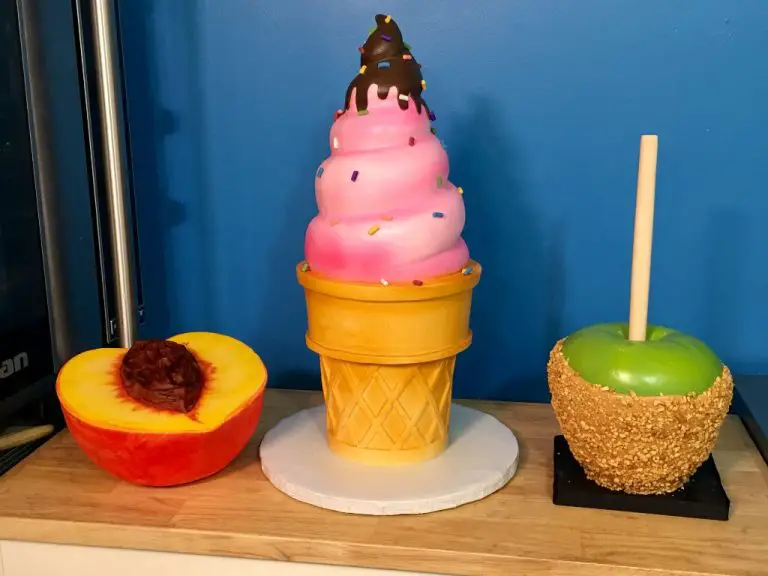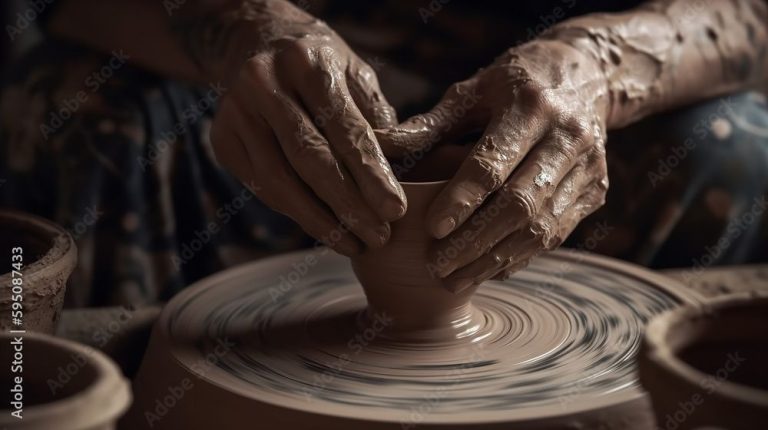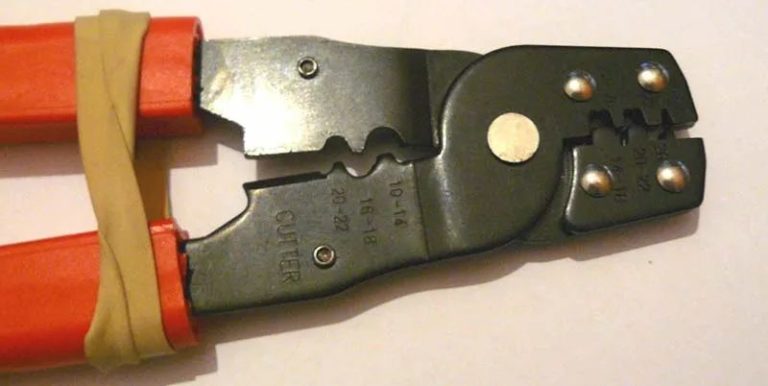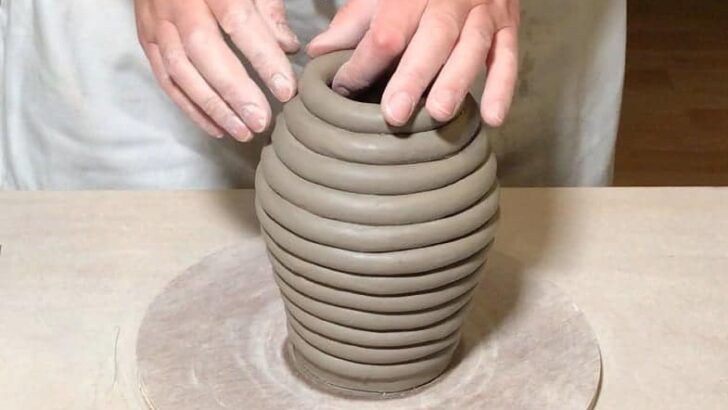How To Make Naruto In Clay?
Naruto is the main protagonist of the popular anime and manga series of the same name. He is a young ninja known for his orange and blue outfit, spiky blond hair, and upbeat personality. Sculpting a Naruto figure out of polymer clay allows fans to recreate this iconic character in 3D.
Polymer clay is an oil-based modeling material that can be shaped into anything you can imagine. It doesn’t dry out like regular clay, but instead cures and hardens when baked in a standard oven. Polymer clay is an accessible sculpting material, as it is inexpensive, easy to work with, and requires no special tools. Even beginners can sculpt smooth figures and intricate details once they learn some basic techniques.
This guide will walk through the process of sculpting a Naruto figure in polymer clay, from making the armature to painting on the final details. With some patience and creativity, you can make your own desktop Naruto to display!
Gather Materials
To make a Naruto clay sculpture, you will need the following materials:
- Polymer clay in skin tones like tan, yellow, orange – Sculpey III or Fimo brands work well
- Small amounts of black, blue, and blonde polymer clays for hair and clothing accents
- Clay sculpting tools like metal loops, rubber shapers, silicone tipped tools
- Acrylic paints in skin tones, blacks, blues, oranges, yellows, greens
- Paint brushes in small, medium, and large sizes
- Gloss glaze or varnish to seal the sculpture
Make sure to have all the necessary sculpting and painting tools on hand before beginning the Naruto character sculpture.
Make the Armature
The armature is the wire frame that provides structure and support for the clay sculpture. For a Naruto sculpture that will stand upright, the armature should be about 12-18 inches tall. Choose an armature wire that is sturdy but can still be bent into shape, such as 16 or 18 gauge wire.
To make the armature, cut several lengths of wire and use pliers to bend them into the basic shape of Naruto’s body. Use thicker wire for the main torso, legs, and neck, and thinner wire for the arms, hands, and head. Twist the wires together securely where the limbs connect to the body.
Shape the wire into a stable tripod base for the sculpture to stand on. Bend wires up from the base to form the main torso and hip area. Extend wires from the hips for the legs and bend wire into feet shapes. Shape the neck and head wires and bend thinner wire for the arms. The armature does not need details, but should provide a solid inner foundation.
Check the armature stability and reinforce any weak joints. The armature should be sturdy enough to support the weight of the clay without bending or tipping. Once the armature is shaped, it can be wrapped with aluminum foil to provide an outer surface for clay sculpting.
Sculpt the Head
One of the most important parts of sculpting Naruto in polymer clay is sculpting his iconic spiky blonde hair and facial features. Start by shaping the basic head form using your clay. For the hair, roll out thin strands or snakes of clay and attach them radially around the head, pointing upwards. Use a clay sculpting tool to add texture and spikes to the hair strands. Shape the hair into Naruto’s signature spiky style.
For the face, use small balls of clay to form the basic shapes of the eyes, nose, and mouth. Use a clay sculpting tool to add eyebrows. Carefully sculpt the eyes, nostrils, lips, and other facial features. Add expression to the face by shaping the mouth into a smile and making indentations for dimples. For the iconic whisker marks on Naruto’s cheeks, use a clay tool to etched curved line indentations. Work slowly and carefully to capture the likeness from reference images. Getting the facial proportions and expression right will help bring Naruto to life.
Sculpt the Body
To sculpt Naruto’s body, start by shaping the torso and chest area. Use your clay sculpting tools to gently push and smooth the clay to form the basic body structure. Make sure to refer to reference images to capture Naruto’s proportions accurately.
Pay close attention to the width of the shoulders, chest, and hips. Naruto is a muscular ninja, so build up his form to reflect his fit physique. Use your fingers, sculpting tools, or foam tips to blend the clay and refine the anatomy.
Next, add the details of Naruto’s clothing on top of the body form. Carefully sculpt the folds and drapes of his jacket to make it look like fabric flowing over his frame. Add seams, wrinkles, and other textures to create a sense of movement. Accentuate the 3D form of his jacket by defining shadows and highlights as needed.
Take care when sculpting delicate areas like hands and face to preserve small details. Work slowly and gently to perfect Naruto’s proportions. Refine and smooth over fingerprints or tool marks to create a polished finish.
Sculpt any accessories like Naruto’s headband or leg bandages as separate pieces, then attach them later after baking. Building the body section by section allows for optimal strength and detail.
Sculpt the Arms and Hands
When sculpting Naruto’s arms and hands, pay close attention to anatomy to achieve realistic looking limbs. Start by rolling two balls of clay into tapered cylinders for the upper arms. Use your fingers to pinch and pull the clay, refining the shape. Add indentations and lines to indicate muscles and joints.
For the lower arms, roll out a rectangular slab of clay and wrap it around the upper arm so the seam faces the inner arm. Blend the seams together smoothly. Use a sculpting tool to add definition to the muscles and veins in the forearms and hands.
To sculpt Naruto’s hands, flatten palm sized balls of clay into basic mitten shapes for the palms and fingers. Use a knife or clay shaper to add separation between the fingers. Roll tiny balls of clay for the fingertips. Carefully define the joints and nails in each finger.
An iconic part of Naruto is his hand signs, so consider adding a hand sign like Shadow Clone Jutsu or Rasengan. To do this, position the fingers and thumb into the sign’s shape. You can also add objects like kunai knives, shuriken, or scrolls using thin coils of clay.
Work slowly and carefully when sculpting the hands and arms. They need to be well-supported to avoid sagging or breaking when baked. Adding wires or foil armature can help. Take photos for reference as you sculpt to achieve the right poses and proportions.
Sculpt the Legs and Feet
Creating realistic looking legs and feet that are able to support the sculpture can be tricky. Here are some tips for sculpting strong legs and feet for your Naruto clay sculpture:
Start by rolling out sausage-shaped pieces of clay for the thighs and calves. Use your fingers to gently blend the clay at the knees so the legs look natural. For the feet, form a rectangular clay base then shape the details of the toes, heels and arches using clay sculpting tools.
To keep the legs sturdy, press wire armatures into each leg before baking. Use thick floral wire and bend into an L-shape with a wide base to support the thighs. Use thinner wire pieces in each foot to hold the shape. Make sure the wire pokes out of the top of the legs so it can slide into the hip joints.
Pay attention to proportions when sculpting the legs. The feet should be around as long as the distance from the knee to the hip. Let gravity help shape the clay by holding the legs upright as you work. This will keep the legs looking natural.
Take time on the details that bring Naruto’s legs and feet to life. Add his signature black sandals with indented straps. Sculpt the folds and creases in his orange pants around the ankles. Adding nails, veins and muscles in the feet adds realism. Get creative with dynamic leg poses or sculpt Naruto sitting crossed-legged.
With strong armatures, well-blended clay and attention to realistic details, your Naruto sculpture will be able to stand securely on his own two feet.
Baking and Cooling
Properly baking and cooling your Naruto sculpture is critical for ensuring it maintains its shape and structural integrity. When working with polymer clay, follow these guidelines for baking and cooling:
Baking Temperature and Duration: Refer to your clay brand’s instructions, as each has different requirements. In general, bake smaller sculptures at 265°F for 15 minutes per 1/4 inch of thickness. Thicker areas may require longer. Bake in multiple stages if needed to thoroughly cure the inside without over-baking the outside.
Baking Supports: Bake your sculpture on a ceramic tile or baking sheet lined with parchment paper. The sculpture should not touch the sides or top of the oven. Avoid baking directly on aluminum foil as it can react with the clay.
Cooling: Let cool completely before handling. Rapid temperature changes can cause cracking or warping. Allow an hour or more of cooling time, depending on sculpture size. For best results, turn off the oven and let the sculpture cool down gradually inside as the oven cools.
With proper baking and cooling, your polymer clay Naruto sculpture will be strong, durable, and ready for painting and finishing touches.
Painting and Finishing
Once the clay sculpture of Naruto has cooled after baking, it’s time to add color and finish. Start by priming the entire sculpt with an acrylic primer, following the instructions on the paint can. Allow the primer to dry completely. Next, you can begin painting Naruto’s face using acrylic paints and fine detail brushes. Carefully paint Naruto’s facial features such as his eyes, nose, mouth, ears, and hair. Use reference images to match his colors as closely as possible.
For his clothing, paint the blue and orange fabric portions. Start from the inside and move outward so the outer parts cover any overlapping paint. For the zippers and metal details on the jacket, paint with a silver acrylic paint. Paint Naruto’s trademark headband in gray and black with the metal plate in silver.
After all the painting is complete, you can finish the surface. For a glossy look, apply a clear acrylic gloss sealant with a paintbrush. Allow the sealant to dry completely. Alternatively, a matte or satin acrylic spray sealer can be applied for a more subtle finish. Place Naruto on a flat surface in a well-ventilated area, and apply several thin coats of sealer according to the instructions. Let dry between each coat. Your finished clay sculpture of Naruto is ready for display!
Displaying the Finished Sculpture
After spending all that time sculpting and painting your Naruto figure, you’ll want to proudly display it for all to see. Here are some tips for properly showing off your clay sculpture:
Find a sturdy base or stand to display the figure on. Since clay is heavy, you don’t want to risk the sculpture toppling over. Acrylic rod displays work well for smaller sculptures. For larger pieces, look for thick wood or plastic bases.
Choose an area away from direct sunlight, which can fade the painted colors over time. A bookshelf, desk, or shelf in a room with indirect light is ideal.
Consider displaying Naruto inside a glass case or dome. This prevents dust buildup and accidental nicks and bumps which may damage the clay. Just make sure to open the case periodically for airflow.
To preserve the clay long-term, apply a sealant spray once the paint is fully cured. This protects against moisture absorption and cracking. Re-apply sealant every 1-2 years.
Handle the finished sculpture gently by the base or stand whenever moving it. Clay can be surprisingly durable, but it’s still vulnerable to drops and shocks.
With the right display spot and care, your Naruto clay sculpture will look amazing for years to come. Just be sure to proudly show him off for all your anime-loving friends to admire!




